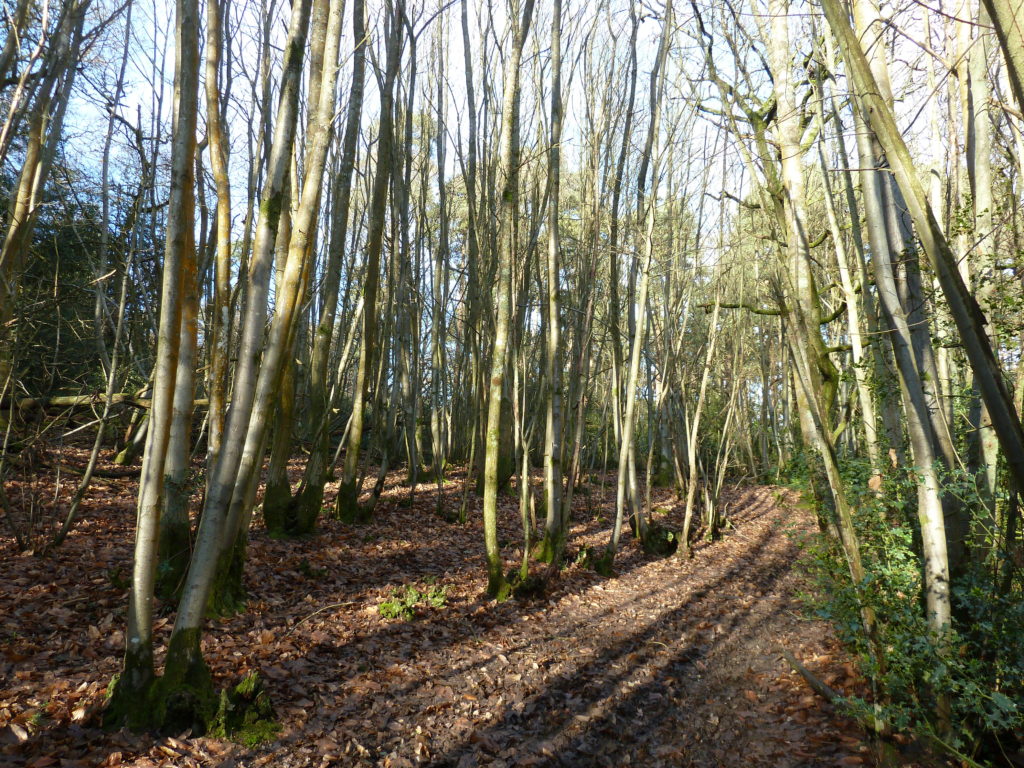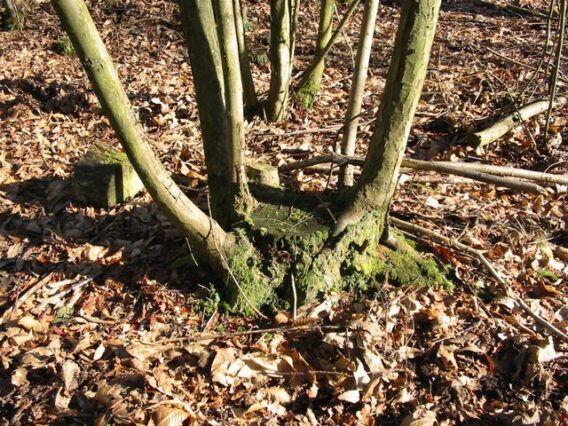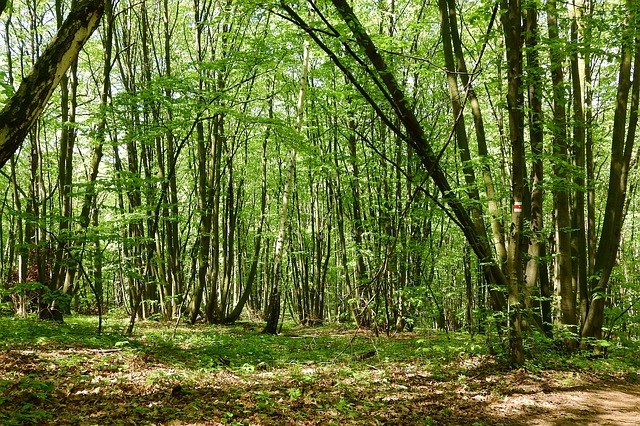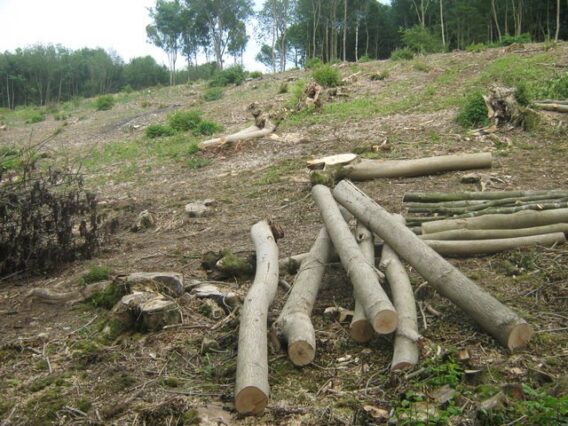Coppicing is a way to produce trees that have multiple stems, rather than a single tree trunk. It is an old tradition of woodland management used for conservation and as a sustainable way to produce timber without the need to plant new trees.

How Coppicing Works
When a tree is cut to a stump, called a coppice stool, growth is stimulated. This produces several new shoots in the following spring. These can be left to grow until they reach the desired size and thickness before being harvested.

Because coppiced trees already have a well-developed root system, they readily regrow. The coppicing process can continually be repeated, providing a sustainable way of producing wood for different purposes.

Clive Perrin / Coppice stool in Hasley Enclosure New Forest Hampshire
Almost any species of can be coppiced, but some are more suitable than others. The most common are from trees where larger logs have little value, such as hazel. Some species of tree just do not thrive when coppiced, such as birch.
What is Coppiced Wood used for?
The timber from coppiced trees, known as underwood, can be can be harvested at different sizes. This makes it suitable for many products.
It is a sustainable way to produce firewood, or to make charcoal.
Larger timbers can be used in the construction of wooden buildings, sheds or barns. You can earn money from the sale of timber, but if you want to add even more value, you could consider making your own products from coppiced wood.
Long, thin timbers can be used for bean poles or attractive garden canes, thicker ones can be used as fence hurdles or hedge laying stakes. Other products made from coppiced wood are baskets and trugs.
Benefits of Coppicing to Woodland Habitat
Managing woodland by coppicing increases its longevity, as coppiced trees can become considerably older than standards.

When a wood is well managed, it helps to preserve it for the future. Coppicing trees not only help to prolong their life, but a working woodland is more likely to thrive and stay than a neglected wood.
Types of Coppice Woodland
Pure Coppice – Woodland is made up of one tree species.
Mixed Coppice – A mix of tree species are grown together for coppicing. The advantage of this is a variety of timber can be harvested and it provides greater biodiversity for wildlife.
Coppice with Standards– This is when some of the tree species are left to grow naturally, while others are coppices. This creates woodland with large sized trees dotted throughout the smaller sized coppiced trees. An advantage of this is that it creates a more diverse habitat for wildlife. However the coppiced shoots of some tree species may be more of a challenge to grow as there is shade created by the taller trees.
Popular Trees for Coppicing
Ash– grows fast and vigorous when coppiced, but the stool may not produce shoots until the following year.
Beech – tends to coppice better in wetter areas.
Field Maple
Hornbeam
Oak – some of the longest rotations for coppicing.
Sweet Chestnut
Willow – some of the fastest growing stems
The Coppicing Cycle
Coppicing allows timber to be cut and harvested in a cycle, and the number of years it takes depends on the growth rate of the species of tree. The average time between cutting and harvesting is around eight years, but can be less for fast growing species such as willow, or much longer for slow growing species, such as oak.

How you organise your woodland coppicing cycle will depend on several factors, such as the acreage of your plot and what you want to use the timbers for. For example,you might want to divide your wood into smaller plots, leaving some areas to grow for large timbers while you harvest the smaller ones on a more frequent cycle.
How to Coppice
Coppicing works best in the winter months when trees are in their dormant period. This is when there are no leaves on the tree, the sap is slow and there is no growth occurring. This is the optimal time to harvest timber low sap levels will produce drier wood, and it is also less disruptive to wildlife and birds that might be nesting at other times of the year.
Once the growing wood has reaches the desired size, it is cut. The tools used to harvest the wood will depend on its thickness, so an axe might be adequate for thinner stems, while a chainsaw will be more useful for cutting thicker trunks.
Whatever the size of the timber, it is important to always cut in a directions that slopes away from the centre of the stool. This allows water to run off,rather than collect on the stump, which could cause it to rot.

SAFETY TIP: Make sure the area that your working is clear of vegetation and branches that might be a danger while working. Also, keep an eye out for any debris, like metal or stone, which could damage your tools.
Shoots that have a diameter of 8 centimetres or less can simple be cut through in one. Larger stems will need a small cut one side, called and undercut, before being cut through from the opposite side. This is to prevent large splits forming in the timber as it is cut.
After cutting, the stumps should be protected from browsing animals, so that the new shoots can grow strongly and are not nibbled off as soon as they appear. A good way to do this is with temporary fencing, or a cheaper option is to pile lots of smaller branches and stick over the stump.
For more information…
If you want to learn more about coppicing, I recommend this book. It show you how to make a variety of items from coppiced wood, as well as giving detailed information on how to get the most from your coppiced woodland.
If you like woodland topics, then pop your name on the email list and I’ll let you know when there’s a new post that might interest you.

